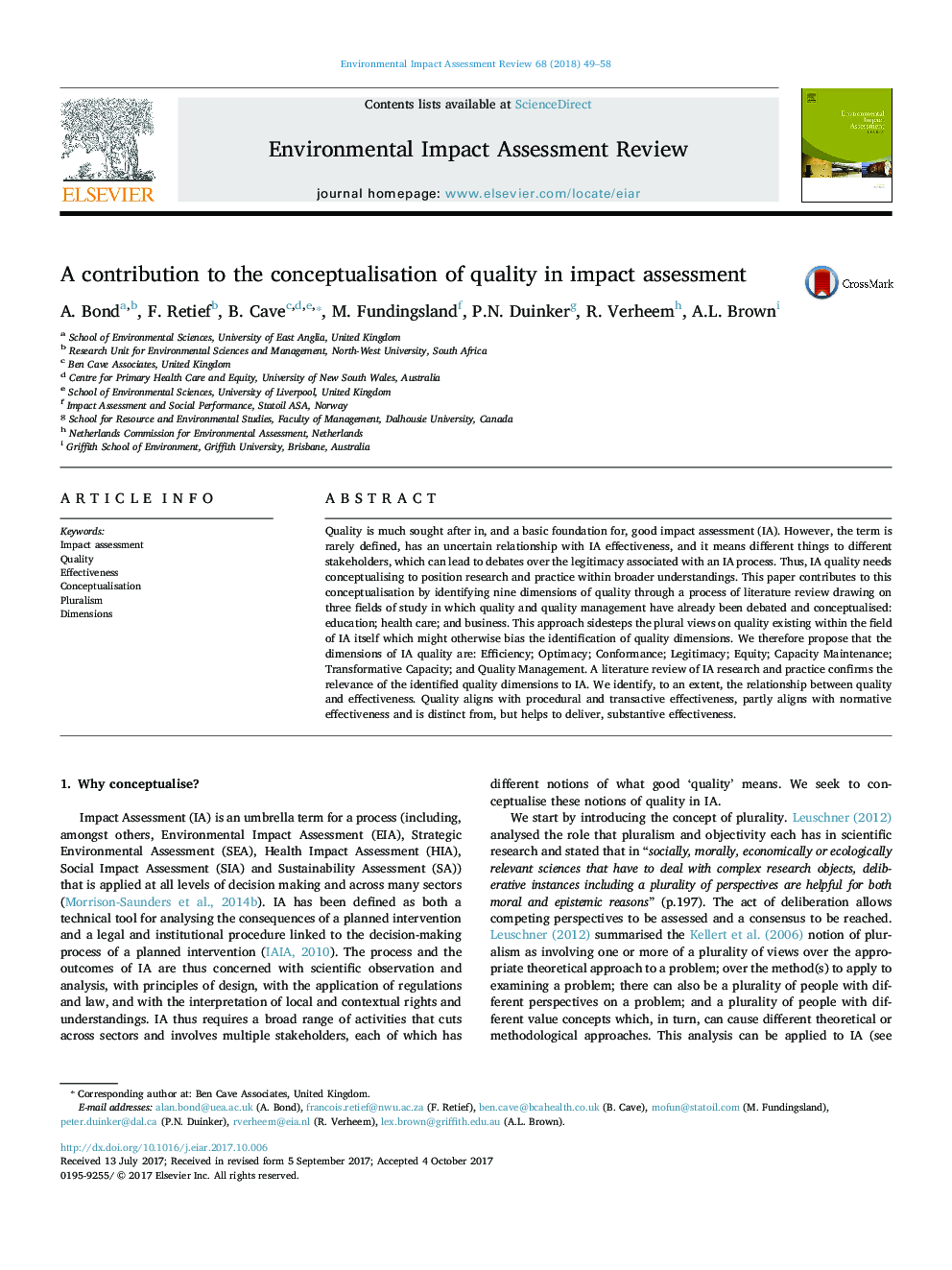| Article ID | Journal | Published Year | Pages | File Type |
|---|---|---|---|---|
| 7464940 | Environmental Impact Assessment Review | 2018 | 10 Pages |
Abstract
Quality is much sought after in, and a basic foundation for, good impact assessment (IA). However, the term is rarely defined, has an uncertain relationship with IA effectiveness, and it means different things to different stakeholders, which can lead to debates over the legitimacy associated with an IA process. Thus, IA quality needs conceptualising to position research and practice within broader understandings. This paper contributes to this conceptualisation by identifying nine dimensions of quality through a process of literature review drawing on three fields of study in which quality and quality management have already been debated and conceptualised: education; health care; and business. This approach sidesteps the plural views on quality existing within the field of IA itself which might otherwise bias the identification of quality dimensions. We therefore propose that the dimensions of IA quality are: Efficiency; Optimacy; Conformance; Legitimacy; Equity; Capacity Maintenance; Transformative Capacity; and Quality Management. A literature review of IA research and practice confirms the relevance of the identified quality dimensions to IA. We identify, to an extent, the relationship between quality and effectiveness. Quality aligns with procedural and transactive effectiveness, partly aligns with normative effectiveness and is distinct from, but helps to deliver, substantive effectiveness.
Related Topics
Physical Sciences and Engineering
Energy
Renewable Energy, Sustainability and the Environment
Authors
A. Bond, F. Retief, B. Cave, M. Fundingsland, P.N. Duinker, R. Verheem, A.L. Brown,
